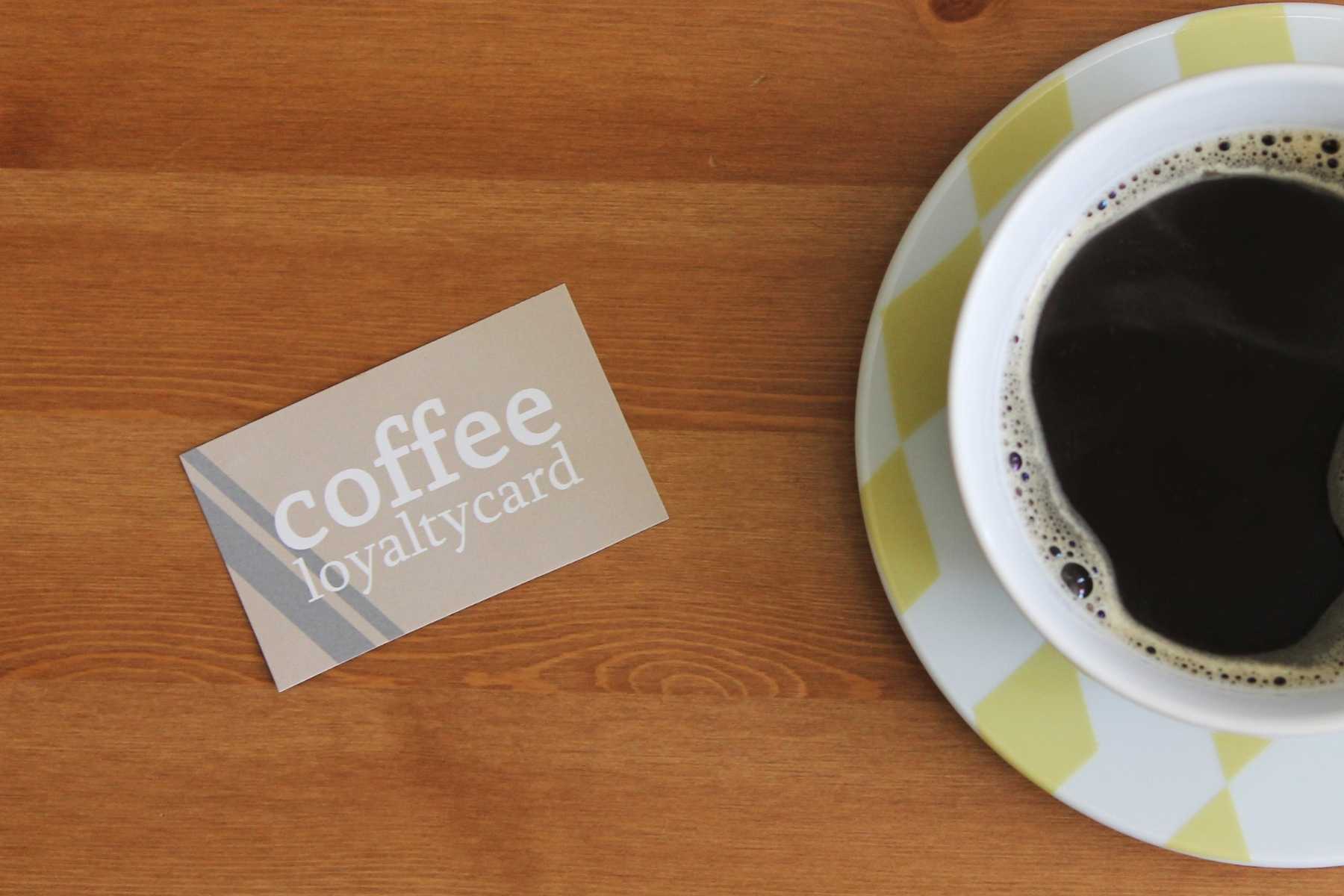
Customer Loyalty Cards: How to Retain Clients in 2025
by Tara Covell
Listen to Audio Version:
Launching a customer loyalty programme in 2025 isn’t just about rewards. It’s about building stronger, lasting relationships with your customers. A well-designed loyalty card system helps increase repeat business, improve customer satisfaction, and encourage referrals, all while collecting valuable data about buying habits.
Whether you’re a café owner looking to introduce a digital stamp card or a growing retailer considering a points-based rewards system, the key is to choose a programme that fits your customers and your business model.
Let’s explore the different types of loyalty cards, how to design an effective programme, and the steps to get started.
Understanding the Benefits
Before diving into the how-to, let's briefly touch on why loyalty cards are beneficial:
-
Increased Customer Retention: Loyalty programs incentivise repeat purchases, encouraging customers to return to your company to earn more rewards. Retaining an existing customer is significantly more cost-effective than acquiring a new one, making this a substantial advantage.
-
Customer Referrals: Loyal customers not only shop with you more frequently but also tend to share their positive experiences with friends and family. These customers are likely to become brand advocates, boosting your sales through word of mouth without the need for expensive advertising.
-
Increased Sales: Loyalty programs encourage customers to buy more to earn more rewards. When executed correctly, this can lead to a noticeable uptick in sales as more customers participate in the program.
-
Enhanced Customer Experience: Loyalty programmes make customers feel appreciated and valued, thereby increasing satisfaction levels. As a business owner, prioritising a positive customer experience should always be a key goal.
Different Types of Customer Loyalty Programs
Here are some different customer loyalty programs available:
Stamp Card Programs
Stamp card programs are one of the simplest forms of customer loyalty initiatives. Typically, customers receive a physical or app-based stamp card that they present at each visit. With every specified purchase, they earn a stamp. After collecting a set number of stamps (usually 10), they receive a free or discounted item.
These programs are particularly popular with coffee shops and eateries. An example is a “Buy ten coffees, get one free” card that encourages repeat visits. The high opt-in rate is attributed to the ease of participation, as customers can take a card without signing up.
Points-Based Programs
Points-based programs are among the most popular customer loyalty schemes. They boast a low barrier to entry and high opt-in rates. Customers earn points for every specified amount spent, often at a rate of two points per pound (like Sainsbury's Nectar Points).
After accumulating a certain number of points, customers can redeem them for discounts, coupons, or other rewards. Unlike stamp cards, point-based systems apply to all purchases, not just a specific product. This flexibility and added value make these programs more appealing and secure, reducing the risk of fraud associated with fake cards.
Tiered Loyalty Programs
Tiered loyalty programs offer escalating rewards based on a customer's spending level or accumulated points over time. These programs usually feature several tiers, with each higher level offering greater perks, special deals, and exclusive offers.
The structure incentivises customers to spend more to reach higher tiers. This type of program is common among airlines and hotels, where top-tier members enjoy benefits such as free upgrades and waived fees. Uber also used a tiered system before transitioning to a paid loyalty program.
Paid Loyalty Programs
Paid loyalty programs, also known as fee-based loyalty programs, require customers to pay a one-time or recurring fee to join. These programs often have lower buy-in rates, as customers must perceive that the benefits outweigh the costs.
Amazon Prime is a prime example, offering members benefits like free one-day shipping, early access to deals, and exclusive events for an annual fee.
Value-Based Programs
Value-based programs are unique in that they focus on philanthropy rather than personal rewards. Customers' purchases support charitable causes or social initiatives instead of earning direct perks.
An example is TOMS shoes, which donates a pair of shoes to a child in need for every pair sold. These programs appeal to customers who value social responsibility and want their purchases to contribute to a greater good, though they may be less attractive to those seeking personal rewards.
Step-by-Step Guide to Getting Started
Here is our step-by-step guide to getting your customer loyalty scheme up and running:
1. Define Your Objectives
Start by identifying what you aim to achieve with your loyalty program. Common objectives include increasing repeat purchases, boosting average order value, or gathering customer data. Having clear goals will guide the design and implementation of your program.
2. Choose the Right Type of Loyalty Program
There are various types of loyalty programs to consider:
- Points-Based Program: Customers earn points for purchases, which they can redeem for rewards.
- Tiered Program: Rewards increase as customers move up tiers based on their spending.
- Paid Membership: Customers pay a fee for exclusive benefits and discounts.
- Stamp Card: Simple and effective, customers receive a reward after a set number of purchases.
Select a program type that aligns with your business model and customer preferences.
3. Select a Platform
Choosing the right platform to manage your loyalty program is crucial. Several options range from dedicated loyalty software to integrated solutions within your point-of-sale (POS) system. Ensure the selected platform can handle your specific needs, including tracking customer purchases and managing rewards.
4. Design Your Loyalty Card
Your loyalty card should be visually appealing and reflect your brand. Consider whether you'll offer physical cards, digital cards, or both. Digital cards are often more convenient for customers and easier to manage, especially when they can be added to their digital wallets.
5. Set Up the Program Rules
Clearly define how customers will earn and redeem rewards. Make the rules simple to understand to avoid any confusion. Decide on:
- Earning Points: How many points per pound spent?
- Redemption: What rewards are available, and how many points are needed for each?
- Expiration: Do points expire after a specific period?
6. Promote Your Program
A loyalty program is only effective if customers know about it. Use multiple channels to promote your program:
- In-Store Promotion: Train your staff to inform customers at checkout.
- Email Marketing: Send announcements and reminders to your customer list.
- Social Media: Highlight the benefits and success stories.
- Website: Dedicate a section to your loyalty program details.
7. Monitor and Adjust
Once your program is live, continuously monitor its performance. Gather customer and staff feedback to identify areas for improvement. Use the data collected to refine your program and ensure it remains engaging and valuable to your customers.
Frequently Asked Questions About Customer Loyalty Programmes
1. What is the best customer loyalty card system in 2025?
It depends on your business type. For small retailers and cafés, digital stamp cards like Stamp Me or LoyalZoo are easy to use and cost-effective. For larger businesses, points-based systems such as LoyaltyLion or Yotpo integrate well with e-commerce platforms.
2. Do loyalty cards still work in 2025?
Absolutely. While traditional paper cards are less common, digital loyalty programmes are thriving. They’re easier to track, reduce fraud, and integrate seamlessly with POS systems. The key is to keep the rewards relevant and achievable.
3. Are digital loyalty programmes better than physical cards?
Digital programmes often perform better because they’re more convenient and provide real-time insights into customer behaviour. However, physical cards can still work well for small, local businesses that rely on personal relationships.
4. How can loyalty programmes help my business grow?
They increase customer retention, boost repeat sales, and turn satisfied customers into brand advocates. Pairing a loyalty programme with your overall growth strategy ensures long-term profitability and stronger customer relationships.
5. What’s the easiest loyalty programme to start with?
For most small businesses, stamp or points-based systems are the simplest. They’re low-cost, easy to manage, and instantly familiar to customers. As you grow, you can transition to tiered or paid programmes to reward loyalty at scale.
Final Thoughts
Implementing a customer loyalty card programme can significantly enhance your ability to retain customers and increase sales. By following these steps, you’ll be well on your way to creating a loyalty strategy that benefits both your business and your customers.
Want to make sure your loyalty strategy ties into your broader business goals? Explore our Business Growth Consultancy services to see how TAB can help you strengthen customer relationships and long-term performance.
Related articles

How AI Can Help You Understand Your Customers Better Than Ever Before
Discover how AI can revolutionise customer understanding, drive personalised experiences, and boost customer loyalty with advanced tools and techniques.

Loyalty points
Ed Reid discusses loyalty, both from our customers and from our staff. The requirements for loyalty have changed dramatically, so how can leaders keep up?

The benefits of customer loyalty and how to develop it in 2024
This is a guide to the benefits of customer loyalty. Learn why your business should focus on building customer loyalty with this in-depth post.





